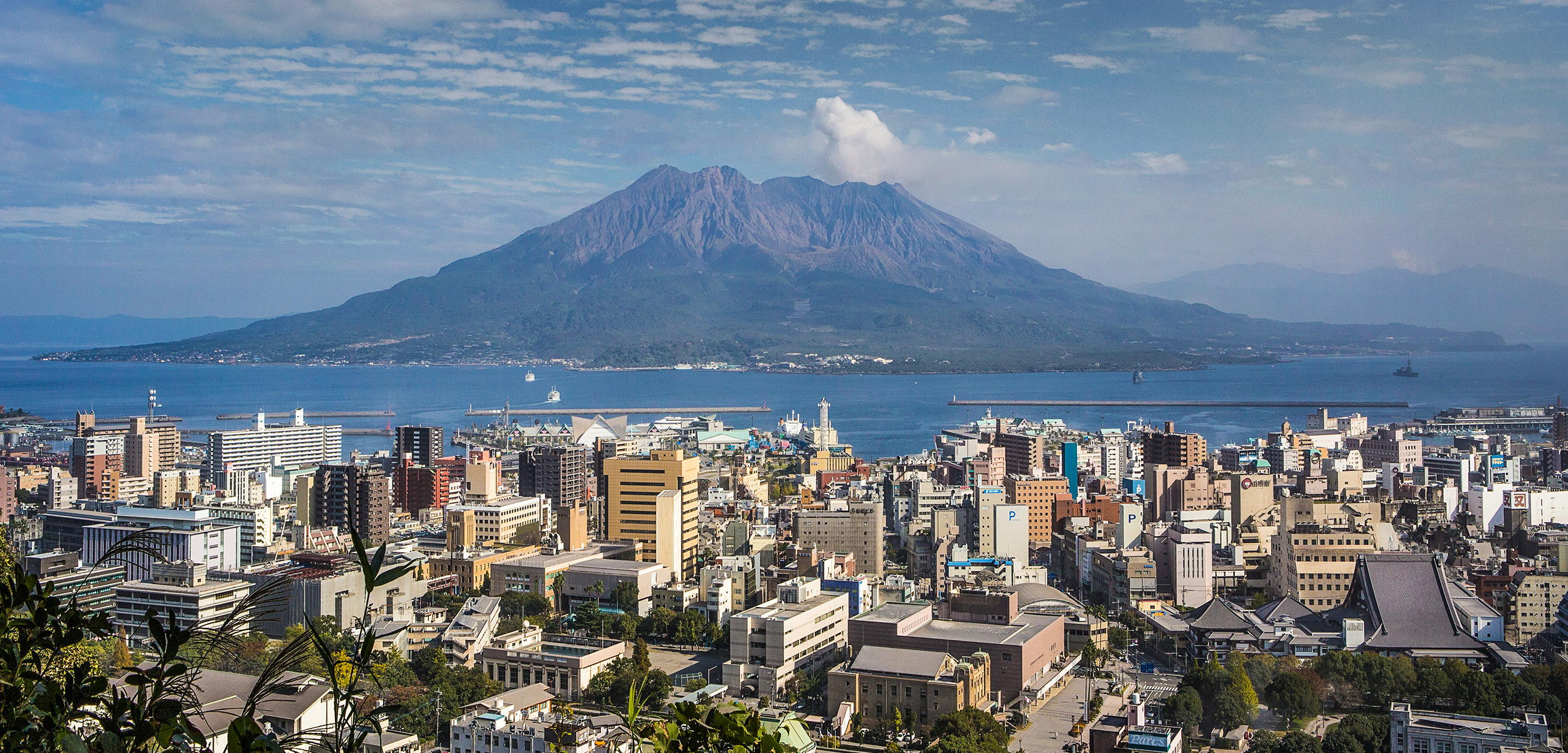Soaking in Sakurajima
Living on an active Japanese volcano has its own steamy rewards.
Article body copy
Shore Lines is a place for readers to recount an experience of personal significance that helped them connect with one small stretch of the world’s vast and varied coast.
After a couple of weeks in Japan, a growing list of things puzzled me. For instance, how does the country with the most vending machines per capita have no public garbage cans yet virtually no litter? How can schoolgirls saunter around wearing miniskirts in sub-freezing February weather while I shiver beneath five layers of clothing (everything I packed)? But perhaps the most bewildering is, why do thousands of people choose to live on the slopes of one of the country’s most active volcanoes?
Sakurajima has been erupting almost continuously since 1955. Crowned by an ever-present plume of smoke, it dominates the view from the neighboring harbor city of Kagoshima, on the island of Kyushu. Although sakura means “cherry blossom” and jima means “island,” it’s technically been a peninsula since 1914 when lava flowed into the bay, connecting Sakurajima to the main island.
Sakurajima has over 5,000 residents, whom I deem to be either brave or crazy. It also has one hotel, which has an onsen—a hot spring, warmed by the same forces that make the volcano dangerous—overlooking the bay, luring tourists and locals alike. My wife, a woman of Indian descent, and I, a ginger-haired white man, are clearly the former.
Traditionally, men and women bathe together in an onsen. Nude. But this onsen—about the size of a small, in-ground swimming pool and sparsely occupied—has a Shinto shrine at the pool’s edge, so propriety demands bathers wear robes. As we wade into the water, however, our thin, white, cotton robes turn transparent, making us feel like we’ve entered a sacred wet T-shirt contest.
We’ve come to enjoy the water, but many others take time to pray. One man chats with us about our trip and then wades over to the shrine to pray for our safe travels, a reminder of the seemingly limitless hospitality of the Japanese. The frigid breeze on our heads makes the hot water feel intimate and inviting. As we witness the spiritual moments of semi-naked strangers, the Sun begins to set, casting a warm glow on the rock face. My body relaxes, and a mental stillness sets in.
It occurs to me that an active volcano might not be that different from the other hazards in our lives—it’s just more visible. And at least the volcano offers us something in return, be it spirituality, relaxation, or a glimpse into an ancient tradition. Perhaps the residents of Sakurajima aren’t so crazy after all.

